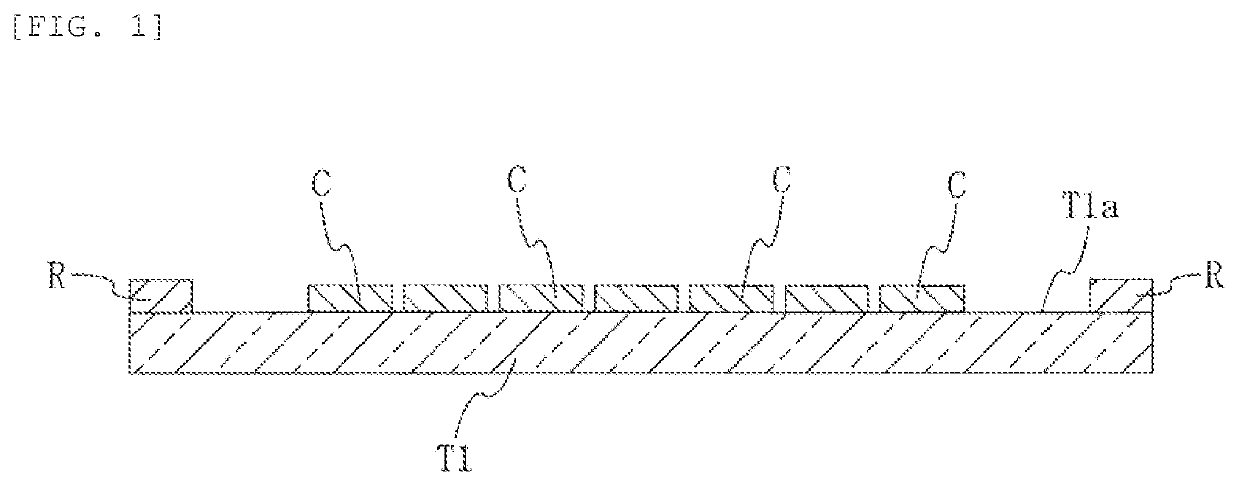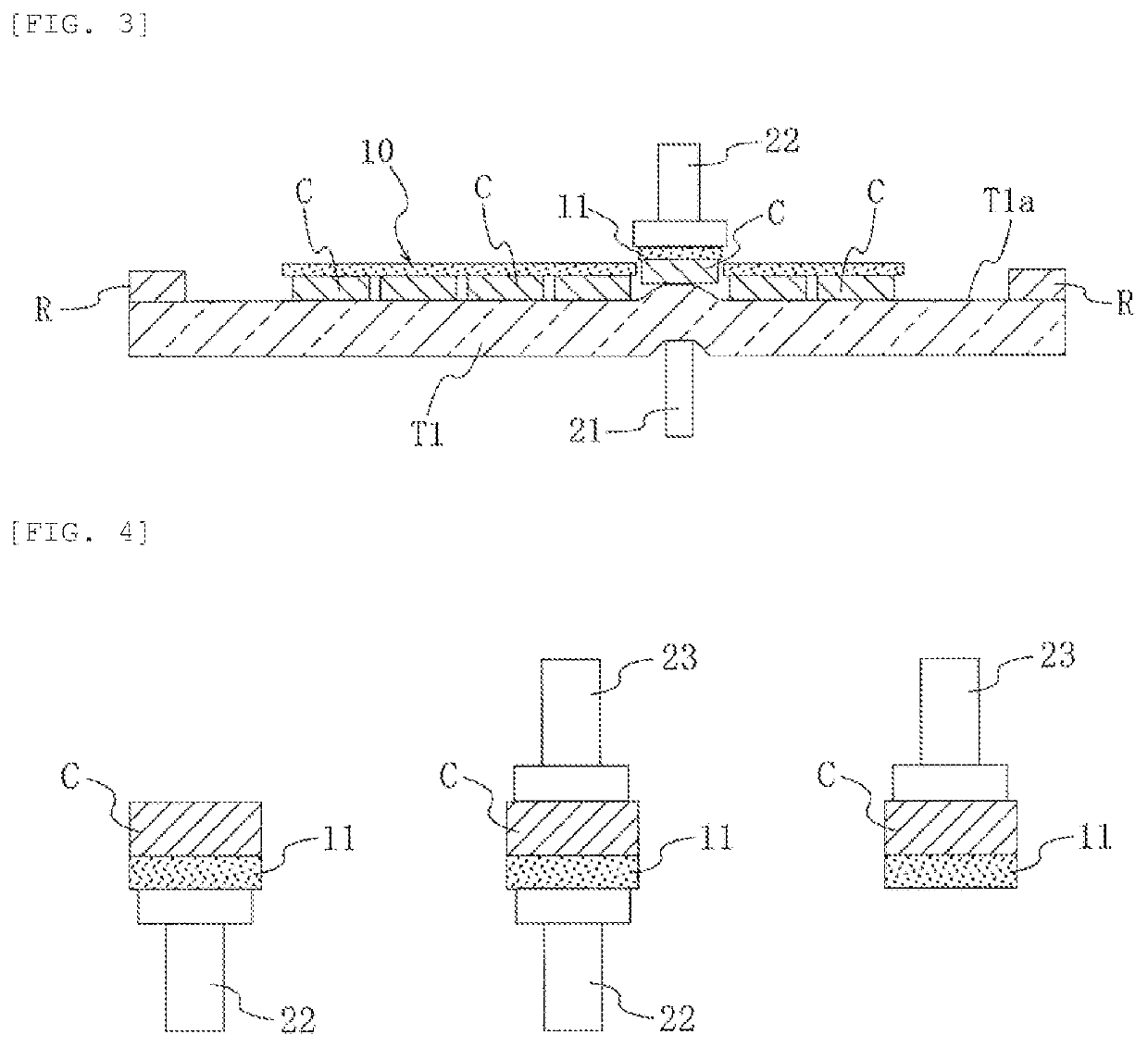Manufacturing method for semiconductor device
- Summary
- Abstract
- Description
- Claims
- Application Information
AI Technical Summary
Benefits of technology
Problems solved by technology
Method used
Image
Examples
Embodiment Construction
[0036]FIGS. 1 to 6 illustrate a semiconductor device manufacturing method according to one embodiment of the present invention. The semiconductor device manufacturing method according to the embodiment is a method for manufacturing a power semiconductor device or another semiconductor device including semiconductor chips in sinter-bonded areas and includes an arrangement step, a transfer step, a picking-up step, a temporary securing step, and a sinter bonding step as follows.
[0037]In the arrangement step, chips C are arranged on a processing tape T1, as illustrated in FIG. 1. The processing tape T1 typically has a multilayer structure including a carrier (base) and a pressure-sensitive adhesive layer and has, on one side, an adhesive face T1a defined by the pressure-sensitive adhesive layer. To the periphery of the adhesive face T1a of the processing tape T1, a ring frame R adheres. The ring frame R is a member with which a conveying mechanism, such as a conveying arm, is in mechani...
PUM
 Login to View More
Login to View More Abstract
Description
Claims
Application Information
 Login to View More
Login to View More - R&D
- Intellectual Property
- Life Sciences
- Materials
- Tech Scout
- Unparalleled Data Quality
- Higher Quality Content
- 60% Fewer Hallucinations
Browse by: Latest US Patents, China's latest patents, Technical Efficacy Thesaurus, Application Domain, Technology Topic, Popular Technical Reports.
© 2025 PatSnap. All rights reserved.Legal|Privacy policy|Modern Slavery Act Transparency Statement|Sitemap|About US| Contact US: help@patsnap.com



